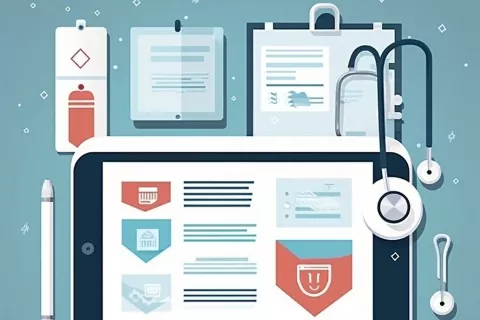The biggest challenge that creative medical device Research and Development (R&D) programs face is that of balancing clinical evidence with early patient access. To address this, a new review system was proposed in Japan, to pace up device clearance while maintaining safety and efficacy. This benefits patients who are inflicted with life-threatening diseases that lack effective treatments.
In response, the Ministry of Health, Labour, and Welfare (MHLW), Japan established a Conditional Early Approval (CEA) system. This system aims at minimizing burdens associated with pre-marketing clinical studies and strengthening Post-marketing Surveillance (PMS) activities. Figure 1 below highlights the four (04) key steps you need to follow in the CEA system for innovative medical devices.
Figure 1: The Four (04) Main Steps in the CEA System

Let us now look at the steps in further detail:
- System Rationale: The system aims at accelerating patients’ access to innovative medical devices developed for life-threatening diseases with no existing therapies. It focuses on cases where the clinical development of a promising and innovative medical device encounters obstacles.
The intention is to address the limitations of pre-approval clinical data by monitoring a product’s real-world performance and identifying any unforeseen risks that may emerge after it becomes available to the public. This approach ensures that adequate measures are in place to manage and mitigate the risks associated with the product, even if they were not initially apparent during the limited clinical trials conducted before CEA.
Before application submitted for approval
| Post-marketing Risk Management Plan for Medical Devices (RMP) must be attached with the application. |
| RMP outlines post-marketing risk management activities- such as data collection and measurement based on safety information to be included. | |
| RMP to be prepared in close cooperation with relevant academic societies or similar entities. | |
| During the approval review, the efficacy and safety of the medical device is assessed based on pre-marketing clinical data, assuming that the described risk management activities will be adequately implemented. | |
| Note- This is a simplified representation, and the actual process may involve additional considerations. | |
- Products Eligible for CEA: Table 1 below provides the list of products that are eligible for the Fast-break scheme.
Table 1: Products Eligible for CEA
|
|
|
|
|
2.2. Submission of application under the system
- Prepare a "Summary of Eligibility for the Conditional Early Approval System with Conditions for Innovative Medical Devices" as an appendix to the primary application.
- Submit - Primary application and the Summary of Eligibility together to the Pharmaceuticals and Medical Devices Agency (PMDA) before scheduling a medical device pre-development consultation.
- During consultation- MHLW, and the PMDA will assess the eligibility of the product for the system.
2.3. MHLW and PMDA review process
- MHLW and PMDA review product's eligibility for the system based on the five (05) criteria mentioned earlier. Additional materials or data may be requested to facilitate the review process.
- If necessary, MHLW involves the "Working Group for the Expedited Introduction of Medical Devices Fulfilling Areas of Highly Unmet Medical Need" to further assess the seriousness of the proposed indication(s) and the availability of treatment alternatives.
- The eligibility determination will be documented in the medical device pre-development consultation record.
- If a decision on eligibility cannot be reached within thirty (30) working days after the face-to-face consultation, MHLW and the PMDA will notify the applicant.
2.4. Eligibility without pre-development consultation
If the candidate product is indicated for a rare disease or fulfills an area of high unmet medical need, the determination of system eligibility can be made without the medical device pre-development consultation.
In such cases, applicants should prepare a Summary of Eligibility and consult with the Medical Device Evaluation Division (MDED) at the Ministry of Health, Labour and Welfare (MHLW) before applying for a medical device pre-development consultation.
2.5. Key considerations for describing the summary of eligibility:
| Requirement A | Summary of Available Data including information on the product candidate, disease(s) targeted, patient characteristics, target patient population size, and supporting data sources. |
| Requirement B | Detailed information on existing therapies, including procedures, medical devices used, clinical performance data, and highlight on superior performance of the candidate product. Additional inclusion- references, guidelines, and relevant materials. If similar products are being developed in Japan, descriptions to be provided. |
| Requirement C |
|
| Requirement D |
|
| Requirement E |
|
| Other Requirement | If the candidate product under development is judged to be a medical device indicated for a rare disease or that fulfills an area of high unmet medical need, this designation is to be included in the notes field. |
Thus, Japan’s Fast-break Scheme offers a streamlined and accelerated approval process for innovative medical devices and seeks to provide early patient access while ensuring safety and efficacy. This program addresses the challenges faced by R&D programs in terms of balancing the need for clinical evidence with the timely availability of life-saving treatments.
To navigate the Fast-break Scheme and get your medical devices approved under it, Contact Freyr. Take advantage of this opportunity to bring your innovative medical devices to patients in need. Stay informed! Stay compliant!










